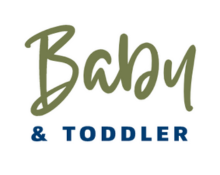
After a feed, it’s common for babies to need some assistance in settling down and getting comfortable. Here are some tips to help settle your baby after a feed:
Burp your baby: As mentioned earlier, burping is important to help release any swallowed air. Gently pat or rub your baby’s back to help them burp. This can help prevent discomfort and reduce the likelihood of spitting up or colic.
Hold your baby upright: After burping, hold your baby in an upright position for a little while. This can help with digestion and minimize the chances of reflux. You can hold your baby against your shoulder or chest, providing gentle support to their head and neck.
Rock or sway gently: Many babies find gentle rocking or swaying motions soothing. You can cradle your baby in your arms or use a rocking chair, a baby swing, or a baby carrier to create a rhythmic motion. This can mimic the feeling of being in the womb and help your baby settle down.
Provide a pacifier or comfort object: Some babies find comfort in sucking. If your baby is calm and content after a feed but still seems to want to suck, you can offer them a pacifier. However, if you’re establishing breastfeeding, it’s generally recommended to wait until breastfeeding is well-established before introducing a pacifier to avoid nipple confusion.
Create a calm environment: Dim the lights, reduce noise and stimulation, and create a calm and peaceful environment for your baby. This can help signal that it’s time to relax and settle down.
Swaddle your baby: Swaddling can provide a sense of security and warmth for your baby. Use a lightweight, breathable blanket to swaddle them snugly, ensuring their hips and legs have room to move and breathe – more on how to swaddle in the next lesson.
Provide gentle touch and comfort: Babies often find comfort in gentle touch. You can stroke their back, hold their hand, or gently massage their feet to help them relax.
Pay attention to your baby’s cues: Every baby is unique, so it’s essential to pay attention to your baby’s cues and respond to their needs. Some babies may prefer being held, while others may feel more settled when placed in a crib or bassinet. Observe your baby’s behavior and adapt your settling techniques accordingly.
Remember, it’s normal for babies to have different settling preferences, and what works for one baby may not work for another. Be patient and responsive to your baby’s needs, and over time you’ll discover the strategies that work best for them.
